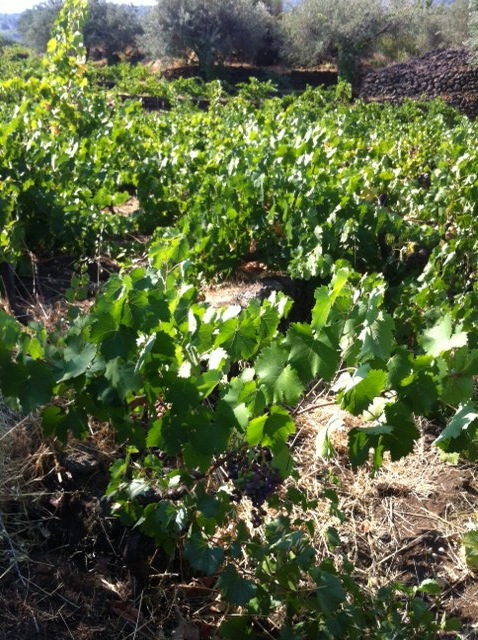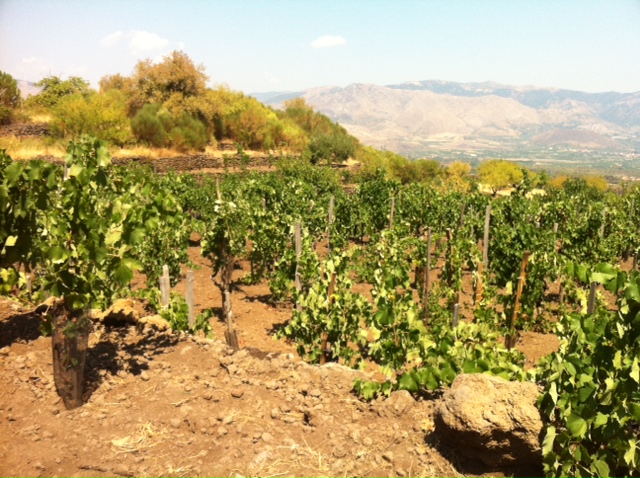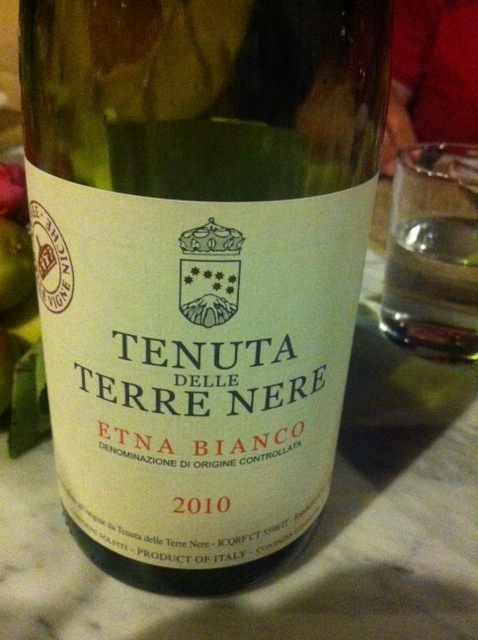 Etna is now the most exciting emerging wine region in Italy. I started hearing about the volcanic region after Marc de Grazia, the then Florence-based fine wine exporter, pitched up camp and moved down to Sicily in early 2000 near the sleepy town of Randazzo below the volcano of Mt. Etna. I remember many people said he was crazy.
Etna is now the most exciting emerging wine region in Italy. I started hearing about the volcanic region after Marc de Grazia, the then Florence-based fine wine exporter, pitched up camp and moved down to Sicily in early 2000 near the sleepy town of Randazzo below the volcano of Mt. Etna. I remember many people said he was crazy.
In fact, he was genius. His first couple vintages at Tenuta delle Terre Nere were less good than even he expected, but today he is making some of the most exciting reds in Italy. Frank Cornelissen, Andrea Franchetti, and Peter Vinding-Diers were also some of the early pioneers in fine winemaking in Etna. Now, many of the top names in Sicilian winemaking are making volcano wines, from Planeta to Tasca d’Almerita.
 Of course, Etna has been a making wine for millennium, but it’s only in the last 10 to 15 years that a few dozen winemakers have been producing world-class wines – both reds and whites that touch your soul with authenticity and character. I drink Etna red on a regular basis. And it always delivers a fascinating wine drinking experience, and the wines are relative bargains for their quality. A standard red is under $20 a bottle in the United States, while amazing old vine wines such as the prephylloxera La Vigna di Don Peppino from Terre Nere are less than $100.
Of course, Etna has been a making wine for millennium, but it’s only in the last 10 to 15 years that a few dozen winemakers have been producing world-class wines – both reds and whites that touch your soul with authenticity and character. I drink Etna red on a regular basis. And it always delivers a fascinating wine drinking experience, and the wines are relative bargains for their quality. A standard red is under $20 a bottle in the United States, while amazing old vine wines such as the prephylloxera La Vigna di Don Peppino from Terre Nere are less than $100.
I spent a week in the region in August and I had an eerie feeling standing below the smoking volcano, which is one of the most active in the world. It’s fascinating how winemakers speak of different lava flows and how their age and type affects the soils of their vineyards. The wines obviously have a minerally, pumice character to them – both white and red. The last eruption was earlier this year.
It was also impressive how cool the region was compared to Tuscany, which was boiling in 100-plus degree weather. The slopes of Etna can be very cool in the summer, especially at night. And this maintains the acidity in the grapes.
I walked the vineyards with a number of grape growers and they always speak about this or that eruption and how it destroyed this or that vineyard. It’s like another world in the vine-growing region of Etna. It is almost like a new a chapter out of A. Conan Doyle’s Lost World. It’s all about different single vineyards in winemaking here, and most of the top producers use such designations on their wines.
 Most of the best wines are modern and well made, emphasizing their terrors and microclimates. I keep thinking about Burgundy when I drink a red, which is made mostly out of Nerello Mascalese. The whites are mostly Carricante. They have very similar textures and mouthfeels as white and red Burgundy when you drink them. It’s not about fruit density or tannic power. It’s about refined textures and subtle characters of dried flowers, red fruits and that unique mineral character to the region. The reds are relatively light colored like a fine Pinot Noir. Some producers are also using international grape types, but I don’t really see the point when the region has such great indigenous ones. However, Etna makes quality Cabernet Sauvignon and Chardonnay too.
Most of the best wines are modern and well made, emphasizing their terrors and microclimates. I keep thinking about Burgundy when I drink a red, which is made mostly out of Nerello Mascalese. The whites are mostly Carricante. They have very similar textures and mouthfeels as white and red Burgundy when you drink them. It’s not about fruit density or tannic power. It’s about refined textures and subtle characters of dried flowers, red fruits and that unique mineral character to the region. The reds are relatively light colored like a fine Pinot Noir. Some producers are also using international grape types, but I don’t really see the point when the region has such great indigenous ones. However, Etna makes quality Cabernet Sauvignon and Chardonnay too.
I tasted about 100 wines on my trip, and found more than 60 to be outstanding quality. I think the best quality wines are still to come. I included barrel samples that I tasted with a two-point spread. Try to get your hands on some of the wines made with ungrafted vines, meaning they are not planted on phylloxera resistant rootstocks. These wines – some made with vines more than 100 years – have the most depth of subtle flavors and super refined palates. Don’t buy or drink Etna if you are looking for blockbuster, jammy wines. The wines are soulful and refined with a unique personality.
 Also tasted, but not receiving marks of 90 points or more:
Also tasted, but not receiving marks of 90 points or more:
2008 Aitala Etna
2008 Benanti Etna Pietramarina
2008 Benanti Etna Biancodicaselle
2005 Benanti Etna Il Monovitigno Nerello Cappuccio
2009 Benanti Etna Rossodiverzella
2006 Benanti Etna Superiore Pietramarina
2007 Biondi Sicilia Outis
2007 Cottanera Sicilia L'Ardenza
2008 Cottanera Sicilia Nume
2008 Cottanera Sicilia Sole di Sesta
2010 Emmi Veruccia Etna Quantico
NV Frank Cornelissen Etna Contadino 9
2011 Girolamo Russo Etna Nerina
2007 Pietradolce Etna Archineri
2011 Scilio Etna Rosato
2011 Scilio Etna Valle Galfina
2010 Scilio Etna Valle Galfina
2008 Tasca d'Almerita Sicilia Tascante
2010 Tenuta di Fessina Etna Erse
2009 Tenuta di Fessina Etna Musmeci
2010 Tenuta di Fessina Etna Puddara
2009 Wiegner Sicilia Artemiso



